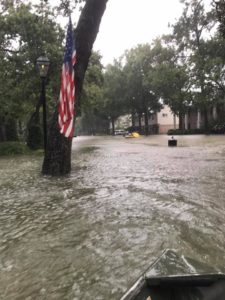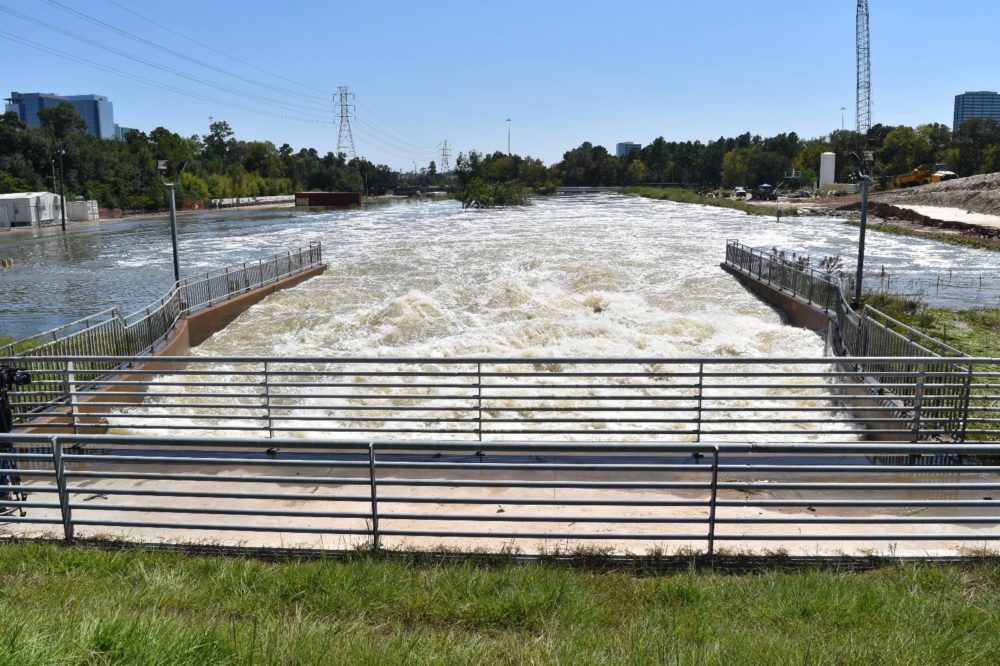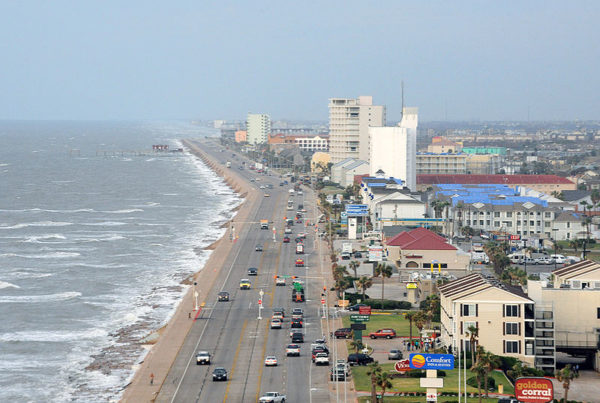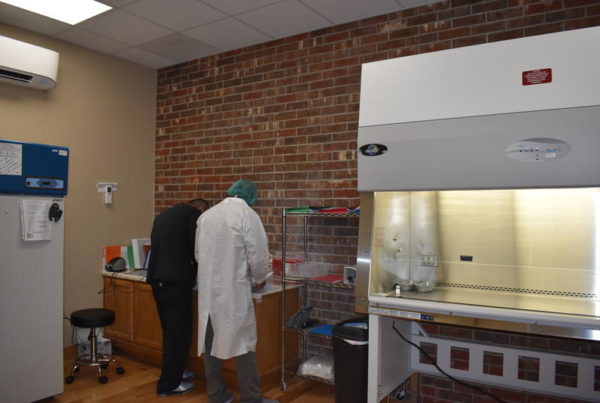From Houston Public Media:
Like many of her neighbors in the Nottingham Forest VIII subdivision in Houston’s Energy Corridor, Katie Mehnert was convinced her home would never flood.
But three years ago, when she heard that the Army Corps of Engineers would be releasing water from the Addicks and Barker Reservoirs, she knew trouble was coming.
“Well, we are about 4 miles from Barker and then Addicks, like we’re just kind of at the intersection, I guess, of these two,” she said.
Mehnert and her husband Mark spent the night in their 6-year-old daughter Ally’s upstairs bedroom. They woke up to find the house surrounded by floodwater. She and her husband tested the waters outside to see if they could escape on foot and quickly realized if they tried, the current would sweep them away.
“That’s when I just surrendered [to] the notion that I wasn’t going to get out without help, and so I put out the word on Facebook that we needed a boat,” Mehnert said.

The Nottingham Forest VIII subdivision on Aug. 28, 2017, taken from a rescue boat.
Within minutes, a boat picked up Mehnert and her daughter. Her husband stayed behind with their dog. The family was reunited the next day. The experience still haunts her.
“That’s a memory my daughter will have, of being on my back, getting into a boat and getting rescued,” Mehnert said. “And it’s not a memory I want for her future. I don’t want her to have to carry her 6-year old out in a boat.”
The back-to-back storms in the Gulf of Mexico this week are grim reminders that the Houston area is marking the third anniversary of Hurricane Harvey.
One of the major sources of flooding during that storm came from the Addicks and Barker Reservoirs west of Houston.
Now locals want to know if, given the same situation, the Army Corps of Engineers would again make the decision to release the water — a question the Corps won’t answer.
The two sides remain in litigation. But Byron Williams of the Corps’ Galveston District told Houston Public Media the Corps has strengthened the structural integrity of the dams over the past three years.
“We’ve done that by installing seepage controls,” Williams said, “and when I say seepage, that’s just the movement of ground water through the dam’s embankment and foundation, and when the conditions are right, you know, that type of movement of water can move the soil particles and lead to dam failure.”
All that reduces the risk of collapse, which is why the Corps had to drain the reservoirs during Harvey.
What it hasn’t done is make the dams higher, or the reservoirs behind them deeper, to accommodate more water – projects that would be hugely expensive.
Philip Bedient, who chairs the civil and environmental engineering department at Rice University, said the Corps’ improvements have made the dams safer, but haven’t eliminated the possibility of a future release from the reservoirs.
Bedient said that, according to the Corps’ own operating manual, “if Harvey were to hit again next week, they would operate in pretty much the same way, because otherwise, they again risk dam failure.”
There also hasn’t been much new development immediately downstream of the dams, Bedient said, but plenty of people in the floodway have rebuilt just where they were before — many without elevating their homes to reduce the risk of flooding.
That includes Katie Mehnert, who moved back into her home 10 months after Harvey.
“Because I love my house, I love this neighborhood, I want to trust that the billion dollars in bond money, you know, and all that is going right towards the projects that need to happen,” Mehnert said.
But she’s still worried. She’s convinced it’s only a matter of time before a future storm forces another release from the reservoirs, flooding her neighborhood again.














